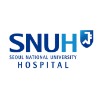
The Safety and Efficacy of Fluoxetine for Refractory Primary Mono-symptomatic Nocturnal Enuresis...
Nocturnal EnuresisTo determine whether there is a role for the selective serotonin reuptake inhibitors, fluoxetine, as therapy in the treatment of refractory primary monosymptomatic nocturnal enuresis in children , and whether there are side effects involved.

Desmopressin for Improving Nocturnal Enuresis in Patients After Radical Cystectomy With Bladder...
Nocturnal EnuresisThe purpose of this study is to prospectively assess whether Desmopressin, given for a period of month to patients after radical cystectomy with orthotopic bladder reconstruction, improves and lowers the rate of nocturnal enuresis.

A Clinical Study on Causticum 200 Centesimal Potency in Primary Enuresis
Bed WettingPrimary EnuresisHomeopathic Medicine Causticum 200c will be prescribed in cases of Primary Enuresis on the basis of available symptoms for a period of one year and the results will be evaluated at the end of the given period and efficacy of the drug will be assessed.

Posterior Tibial Nerve Stimulation Vs Desmopressin In Children With Primary Monosymptomatic Nocturnal...
Primary Monosymptomatic Nocturnal EnuresisNocturnal enuresis is a worldwide health problem frequently encountered in childhood . It affects 18 % of younger school- age children in Egypt. It is the most frequent (85%) type of enuresis in children (Eberdt-Gołabek et al, 2013), . Nocturnal enuresis includes monosymptomatic nocturnal enuresis with no day time urinary symptoms and non monosymptomatic nocturnal enuresis that accompanied by day time urinary symptoms . It can cause severe psychological and social distress to children and their parents . The currently recommended treatment such as alarms , antidiuretic hormone and anticholenergics are not effective in all children with significant relapse rate . Although it's mechanism of action is not fully elucidated , posterior tibial nerve stimulation is safe and acceptable, with evidence of potential clinical effect for both bladder and bowel dysfunction (Bellette et al, 2009). This study will investigate the effect of posterior tibial nerve stimulation on primary monosymptomatic nocturnal enuresis in children.

The Effect of Melatonin on Nocturnal Enuresis
Nocturnal EnuresisAim: To investigate the effect of melatonin in bedwetting.

Enuresis Alarm - Is a Manual Trigger System Beneficial?
EnuresisNocturnalThe purpose of this study is to evaluate whether the bedwetting alarm trigger activated by parents to wake their child, in addition to the moisture alarm, will improve treatment success compared to the moisture alarm alone.

Treatment of Enuresis Nocturna by Circular Muscle Exercise (Paula Method)
Monosymptomatic Enuresis NocturnaSeveral treatment modalities for children suffering from monosymptomathic nocturnal enuresis are available including drugs, alarms, acupuncture, pelvic floor training and biofeedback. The aim of this study is to to test if Paula Method (circular muscle exercise) can be an another treatment modality.

Ability to Awaken in Nonmonosymptomatic Enuresis
EnuresisNocturnal1 moreTo evaluate the effect of controlling lower urinary tract symptoms (LUTS) with anticholinergics on improving the ability to awaken (AA) in children with nonmonosymptomatic enuresis and evaluate the potential implication of improved AA for treatment response prediction.

Sleep Architecture in Valproate-induced Nocturnal Enuresis in Primary School and Preschool Children....
EpilepsyNocturnal EnuresisOur study, retrospectively evaluate the characteristics of and the risk factors for the occurrence of nocturnal enuresis in epileptic children kept on valproate monotherapy. Epileptic children with the age ranged 5 up to 15 years who were started and kept up on valproate monotherapy. In this study, a child determined to have nocturnal enuresis based on the American Psychiatric Association's Diagnostic and Statistical Manual of Mental Disorders, fourth edition: "an involuntary voiding of urine during sleep, with a severity of at least twice a week, in children aged 5 years or older, in the absence of congenital or acquired defects of the nervous system."

The Relationship Between Nocturnal Enuresis And Spina Bifida Occulta
EnuresisNocturnal1 moreIt is claimed that SBO may be responsible for bladder dysfunction in patients without known neurological disease. Subsequently, it was reported that the frequency of SBO in NE cases was higher than normal children. However, in controlled trials, SBO frequency was not different in NE patients compared to the normal population. Conversely, the incidence of dysfunctional bladder in the presence of SBO in NE patients was found to be higher and the response to treatment was worse than in non-SBO patients. The present study aimed to determine whether the frequency of SBO in patients with NE was higher than in healthy subjects, the effect of SBO on the severity of LUTS and whether treatment response of primary NE patients changed in the presence of SBO.
